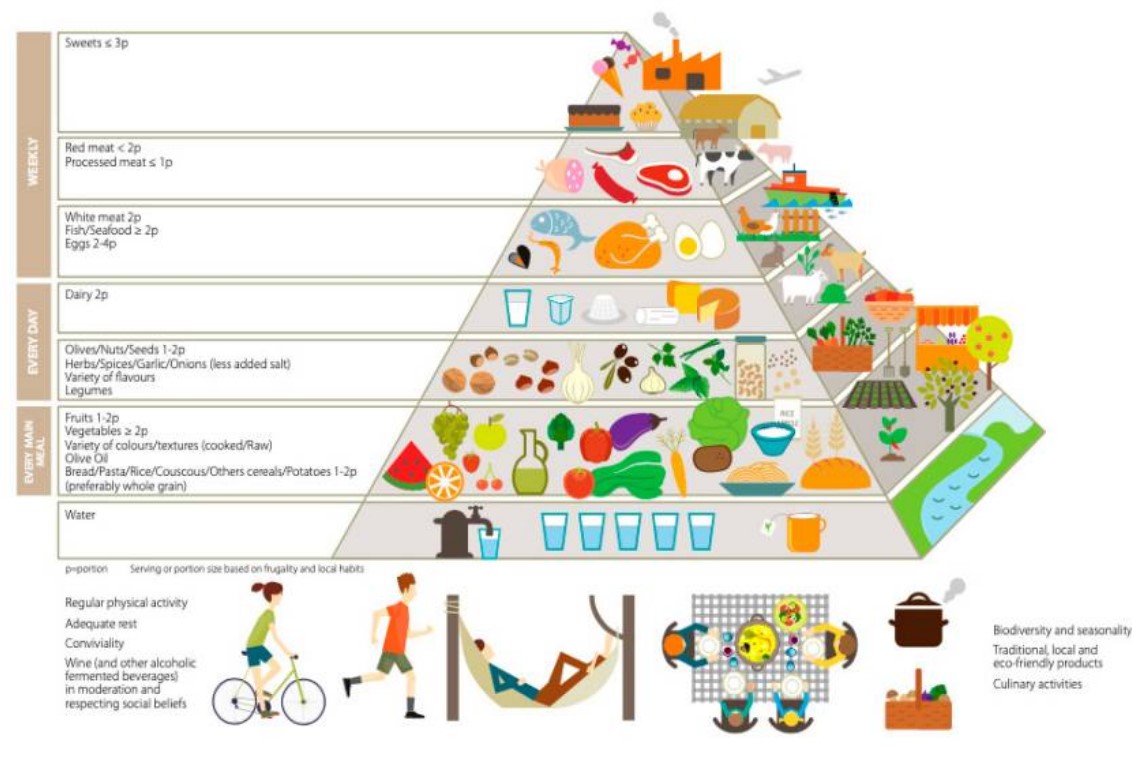Questions often arise about meat… Should humans eat it? Do we need it? Is all meat the same? In this post, we dive into the topic of meat and try to put it into some context of the research work we are doing here at ODX.
First of all, please note that the nutrition information provided by ODX reflects a general overview of some of the elements of a healthy diet and is not meant to be taken as clinical nutrition recommendations or medical nutrition therapy.
It's difficult to encompass the full range of recommendations and reasons for choosing one food over the other. That is because many people make their food choices based on culture, tradition, philosophy, personal beliefs, and other reasons besides health. And, it must be said, the pleasure aspect of food is a factor… some things just taste good, and folks are willing to trade off nutritional value for psychological value.
That is where moderation becomes freedom.
You can still have some of something but not so much that it will have health detriments. Purism and excessive focus on food including orthorexia (an unhealthy focus on eating healthy), can become detrimental. Perhaps even moderation should be practiced in moderation. If choosing food becomes a source of stress, the stress may be worse than the occasional “treat.”
As far as a human requirement for meat, that is an issue that is still unresolved though there are specific nutrients that vegetarians and vegans must be particularly cognizant of especially calcium. iron, zinc, vitamin B12, pre-formed EPA and DHA, and essential amino acids. No doubt one can stay healthy following a vegetarian lifestyle as there are successful athletes who are vegetarian and some that are even vegan.
On the other hand, there are nutrients, especially phytonutrients from fruits and vegetables, that can be missing from a heavily meat-based diet.
As far as quality of meat, that could be a lecture unto itself of course.
Many factors come into play regarding the pros and cons of humans eating meat, especially red meat, how it should be prepared, how often it should be consumed, etc. As omnivores, humans can consume meat but should we?
Meat is a source of vitamins, minerals, and high-quality protein; muscle meats and organ meats can be a concentrated source of nutrients (as long as they are not a concentrated source of toxins); grass-fed cows produce meat and milk with a greater amount of omega-3 fatty acids than grain-fed animals, etc.
Bioaccumulation of toxins including pesticides and radiation; GMO feed; production of polyaromatic hydrocarbons and heterocyclic amines from cooking/grilling meat; additives and toxins in highly processed meat; wild game versus commercially raised; sustainability including the amount of water, fuel, and resources needed to produce red meat; humane concerns; generation of TMAO; usually contains an excess of omega-6 fatty acids compared to omega-3 fatty acids, etc.
At ODX we focus on balance, flexibility, and some of the more basic recommendations that leave a lot of room for the practitioner to incorporate their individualized approach to nutrition into their care plan. With that said, there are individuals who need to be stricter regarding their dietary choices including those with kidney failure, liver disease, gastrointestinal disorders, food allergies or sensitivities, cancer, etc. and these individuals should obtain nutrition advice from a qualified nutrition professional.
The bottom line for ODX is moderation, balance, sustainability, and respect for others.
Below is an image of what has been called the Mediterranean Diet Pyramid. We feel this is an excellent model for healthy eating. Please CLICK HERE to read more about this diet pyramid.
Source: Serra-Majem, Lluís et al. “Updating the Mediterranean Diet Pyramid towards Sustainability: Focus on Environmental Concerns.” International journal of environmental research and public health vol. 17,23 8758. 25 Nov. 2020, doi:10.3390/ijerph17238758 [R] This article is an open access article distributed under the terms and conditions of the Creative Commons Attribution (CC BY) license ([R]).
Battaglia Richi, Evelyne et al. “Health Risks Associated with Meat Consumption: A Review of Epidemiological Studies.” International journal for vitamin and nutrition research. Internationale Zeitschrift fur Vitamin- und Ernahrungsforschung. Journal international de vitaminologie et de nutrition vol. 85,1-2 (2015): 70-8. doi:10.1024/0300-9831/a000224
Givens, D I. “Review: Dairy foods, red meat and processed meat in the diet: implications for health at key life stages.” Animal : an international journal of animal bioscience vol. 12,8 (2018): 1709-1721. doi:10.1017/S1751731118000642
Great Vegan Athletes. https://www.greatveganathletes.com/
Noland, Diana, Jeanne A. Drisko, and Leigh Wagner, eds. Integrative and functional medical nutrition therapy: principles and practices. Springer Nature, 2020.
Serra-Majem, Lluís et al. “Updating the Mediterranean Diet Pyramid towards Sustainability: Focus on Environmental Concerns.” International journal of environmental research and public health vol. 17,23 8758. 25 Nov. 2020, doi:10.3390/ijerph17238758
Wyness, Laura. “The role of red meat in the diet: nutrition and health benefits.” The Proceedings of the Nutrition Society vol. 75,3 (2016): 227-32. doi:10.1017/S0029665115004267